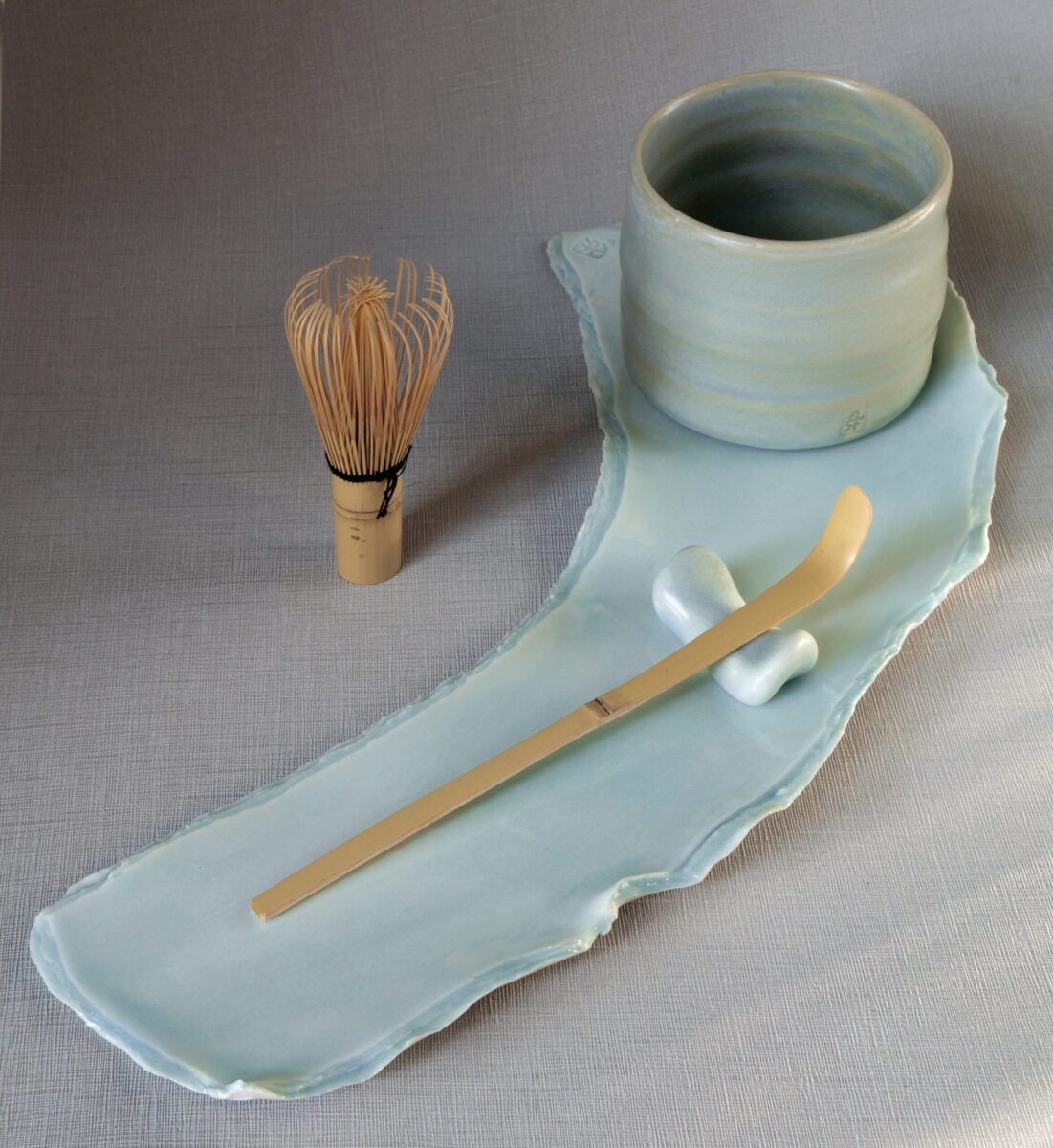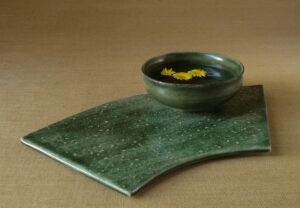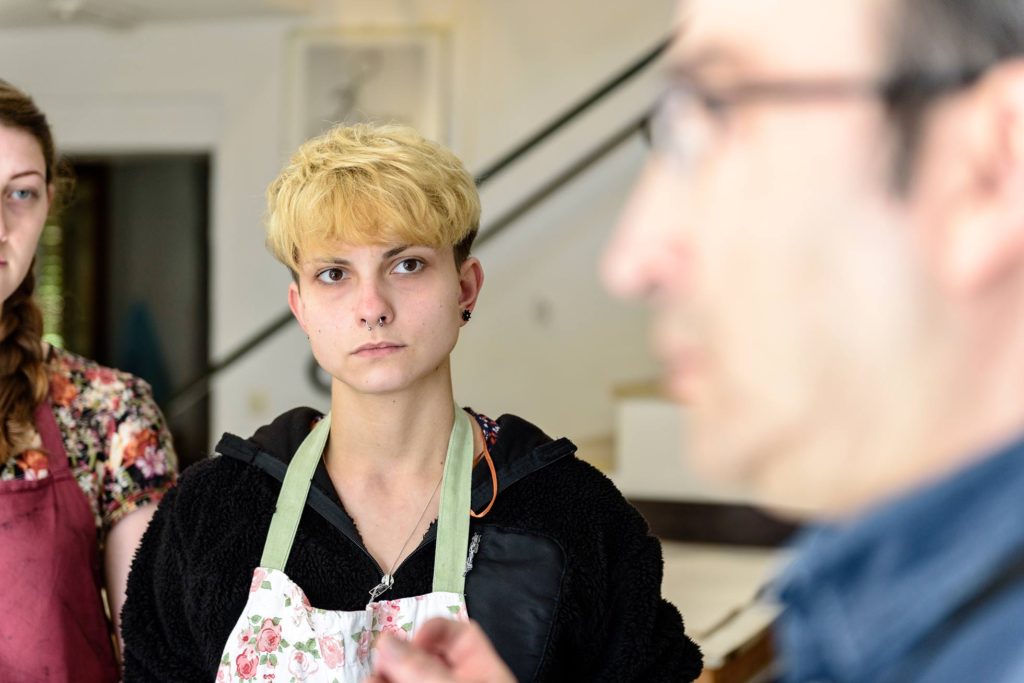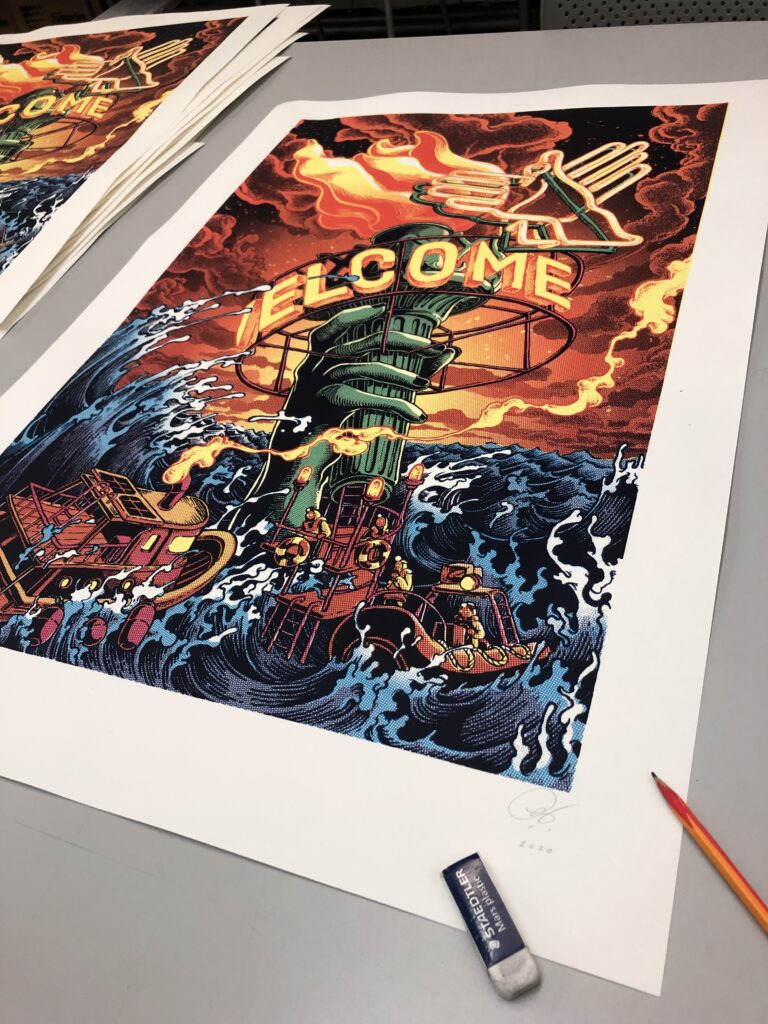
Activity
- Joan Miró Graphic Art Workshops
Given by
- Ana Felipe Royo
Dates
- From August 1st to 9th 2023
Timetable
- From 9 a.m. to 2.30 p.m. on August 1st, 2nd, 3rd, 4th, 7th, 8th.
- On Friday 4th and Tuesday 8th August, the timetable will be extended to include an afternoon session from 4 p.m. to 7 p.m. to fire the pieces.
- On Wednesday 9th August, the kiln will be opened from 4 p.m.
- Saturday and Sunday: no workshop
Maximum no. of students
- 10
Price
- 160€
Contact
T2. 2023 Workshop in Orientally-Inspired Ceramics
Given by Ana Felipe. From August 1st to 9th 2023
The traditions and aesthetics of eastern cultures have a captivating influence. This Orientally-inspired workshop is not aimed at creating faithful reproductions of Oriental ceramics, but at seeking inspiration in them–in their shapes and finishes–, so that the participants can each create their own work.
For this purpose, they will learn to make ceramics with different clays and varying techniques. These will then be decorated with classic Oriental high-temperature glazes for reduction firings. To prepare the glazes, the participants will gain an insight into the technical and visual characteristics of each one (Celadon, Shino, Oribe, Copper red, etc.).
OBJECTIVES
To create Orientally-inspired ceramics: Chawan or yunomi (bowls), Ikebana vases (for floral decorations), sushi tableware, sake glasses, obidome (Japanese brooches).
Techniques:
- Slabs of clay with incisions: mishima, hakeme or brushstrokes using porcelain slips.
- Textured, deformed and cut blocks of clay which are then hollowed out.
- Pinched ceramics.
- Modelling.
- Typical Oriental glazes (for reduction firings): Tenmoku, Celadon, Oribe, Copper Red, Shino.
PROGRAMME
- Tuesday August 1st: An explanation of Oriental ceramics with screened photos. A demonstration of the techniques used to make them. The participants start to make their own ceramics.
- Wednesday August 2nd: The students finish off their ceramics.
- Thursday August 3rd: The completed ceramics dry. An insight into the theory of Oriental glazes. The basic theory of ceramic glazes. An explanation of types of Oriental glazes.
Weighing samples and glazes:
1. Quadraxial blends for base glazes
2. Triaxial blends for Copper Red glazes (or several classic formulae)
3. Triaxial blends for Shino glazes
4. Triaxial blends for Broken Ice glazes
5. Biaxial blends for Oribe glazes
6. Biaxial and triaxial blends for Tenmoku and Celadon glazes
7. Triaxial blends for Celadon glazes (variation of the previous triaxial one) - Friday August 4th: Bisque firing of ceramics. Finishing off the samples from the previous day.
- Monday August 7th: Preparation of 8 glazes to decorate the ceramics.
Taking the bisque fired ceramics out of the kiln and decorating them. Loading the kiln again.
Explanation of Ikebana traditions, the tea ceremony, Obidome, etc. - Tuesday August 8th (from 9 a.m. to 2.30 p.m. and 4 p.m. to 7 p.m.). High-temperature reduction firing.
Explanation of firing processes, types of atmospheres, melting points, firing curves. - Wednesday August 9th (from 4 p.m. to 7 p.m.). Emptying of kiln, explanation, conclusions, and photographs of the ceramics.

Ana Felipe Royo. (Madrid, 1965)
Ana Felipe Royo is a plastic artist who specialized in ceramics at the Valencia School of Art & Design, training under Enrique Mestre. She has also trained extensively in other fields of the plastic arts (volume, painting, photography and printmaking), starting at an early stage at private painting studios in Zaragoza, before going on to Zaragoza School of Art and later moving to Valencia to specialize in ceramics. She completed her studies in Valencia, attended a seminar by David Leach, and was awarded a grant to take part in a series of ceramic studies seminars held at Sargadelos Porcelain Factory (Lugo), where she collaborated on a project with Arcadio Blasco and then in Vizcaya from 1990 to 1999.
She has taken part in numerous joint and solo exhibitions in Spain and abroad (France, Germany, Switzerland, Italy, Morocco, Colombia, the USA, Japan). Given her lack of interest in entering competitions, for over 30 years, she has alternated her personal creative work at her studio with research and teaching. The centres that she has taught at include Antxesaleak Professional Artists’ Association (Vizcaya), the Cantabria Professional Ceramicists’ Association, the workshops of the Fundació Pilar i Joan Miró a Mallorca, Tolima University (Colombia), Zaragoza Provincial Government’s School of Ceramics in Muel, where she gives numerous courses and created the “Library of Ceramic Samples and Glazes”, Zaragoza School of Art and Design, the University of the Basque Country’s Sculpture Department on its M.A. in Ceramic Art & Function, La Bisbal School of Ceramics (Girona), Marratxí Municipal School of Ceramics (Mallorca), and Undermount Cultural Centre & Arts Incubator in Igueldo (San Sebastian).
She has worked as a teacher and head of studio at the “Antonio Saura” Engraving Studio, attached to the Goya-Fuendetodos Foundation, and she devises step-by-step guides, including the photography and design, for Spanish and foreign publishers like RBA, Altaya, Orbis, Planeta de Agostini or Collector.
Ana Felipe’s keen investigative spirit and interest in teaching have led her to revive decorative techniques for ceramics and to explore the potential and contemporary plastic application of techniques like lustre glazes, traditional Arab tile glazes, raku firing, brushstroke decoration, methods for formulating and studying other ceramic glazes, and the use of local raw materials for making clays and glazes.
Further information: https://www.anafeliperoyo.com/






